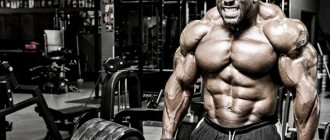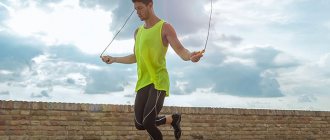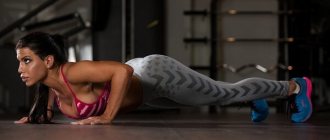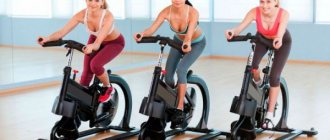Engaging your legs is vital as this is where the largest muscles in the body are located. As you progress toward your fitness goals, you'll burn more calories (both during and after your workout). Today we're going to talk about the sumo deadlift and how it can help you!
You may have heard something about the sumo deadlift, but what exactly is so great about it?
After all, when it comes to being in good physical shape, the image of a huge sumo wrestler is the last thing that comes to mind.
The movement itself has little in common with sumo wrestling per se, but it does work the lower body very well. In this article we will give all the answers about the sumo deadlift. Here we'll answer all your questions about the sumo deadlift, including whether or not you should include it in your training program at all.
- Sumo or classic deadlift, which is better?
- What is a sumo deadlift?
- Proper Deadlift Technique
- Purpose of sumo deadlift
- What muscles work in the sumo deadlift?
- Who should do sumo deadlifts?
- Example workout
- Conclusion
Sumo or classic deadlift, which is better?
For beginners, it is better to use the classic version of the exercise due to the more natural position of the joints when performing. It is also well suited for short or overweight athletes.
Sumo-style deadlifts are better for tall athletes because they allow you to shorten the movement and thereby lift more weight.
Another feature is that in the classics the gluteal muscles are used more and the inner thighs are less, while in sumo, on the contrary, the buttocks work less and the inner thighs work more. If this is important to both of you, then draw appropriate conclusions.
But for general training and working out the muscles of the body, it is better to use different options at different stages of preparation.
I'm sure you've heard a lot of different names like Romanian deadlifts, sumo deadlifts, and sometimes people even ask what the difference is between a squat and a deadlift.
Over time, you will likely become comfortable with your current training program.
You know what to expect from lifting weights, how to perform them correctly, and how much you can do on each exercise.
However, constant changes in the training process, increasing or decreasing weight in the training program are important for many reasons.
- First, you keep shocking your muscles. Muscle stress is very important for developing both strength and size. Over time, your muscles become accustomed to performing certain movements. Once this happens, the impact on the muscles is greatly reduced. You no longer feel sore the morning after your workout, and the gains in strength and size fade away. Adding some movements and abandoning others forces the body to constantly expect a trick. And that means tone, which is essential in the world of weight training and strength building.
- Secondly, new movements always work the body a little differently.
Even if you replace one row with another, the movement will be slightly different, which will cause the muscle fibers to move slightly differently. Even these small changes force the muscles to rebuild and adapt to new types of loads, which leads to constant growth and improvement in strength, which you will not achieve by simply repeating the same movements every time you come to the gym.
It's for these reasons that we recommend looking into new deadlifting techniques that you haven't previously incorporated into your workouts, including the sumo deadlift.
What you need to know before deadlifting
Like the classic deadlift, the sumo deadlift requires some preparation. This technique is more finicky about your stretching than the traditional version of the exercise. Therefore, you should take care of good leg stretching in advance.
It is also necessary to immediately decide on the grip. The safest and correct option for training is for your hands to hold the bar on one side with your fists facing outward (away from you).

It is impossible not to notice that powerlifting often demonstrates different grips. But, please note that there you need to lift the barbell 1 time. And these are not just working weights, but maximum ones. It is unlikely that the wrists will be able to support such weight with a regular grip. That’s why athletes hold the barbell this way at competitions. However, a different grip contributes to an uneven load on the spine and its twisting under the influence of weight. This significantly increases the risk of back injuries. Therefore, for training it is better to use a grip with your palms facing you.
Pay attention to the shoes too. Do not wear sneakers with soft spring soles. You need shoes with a flat, low and elastic platform. Because your heels should neither lift off the floor nor sink into it.
Stock up on an athletic belt. With a healthy back, serious weights should only be lifted with it. If you have a bad back, it is better to wear it even if you weigh 50 kg. This will protect you from possible complications.
Some trainers say that you don’t need to wear anything - let your muscles get used to the load. And when a person gets injured, they cite incorrect technique and haste in progressing the weights. Therefore, wear a belt even with light weights if your back sometimes experiences discomfort. Don’t be ashamed to warm up with an empty bar when others immediately lift 100 kg. Let others ruin their backs, but not you.
What is a sumo deadlift?
The last word in the title should give you some thoughts about what you have to do.
In the classic deadlift, which you already do as part of your program, you have a barbell with plates in front of you.
You lower yourself almost into a squat, with your feet approximately shoulder-width apart, grab the barbell in front of you and keep your back straight. You then explosively yank the barbell upward, holding the barbell with your hands as your lower body pushes you upward. This important exercise works almost the entire lower half of the torso, in addition to this, the lower back is involved and, depending on how you hold your shoulders, the trapezius can also be captured.
The sumo deadlift is similar to the regular deadlift in many ways.
The only difference, at a minimum, is that the technique of performing a sumo deadlift involves a special positioning of the legs.
This is where the name traction comes from. Imagine a sumo wrestler getting ready to throw. Most likely it will be an image of a very large Japanese man in a vanishingly small amount of clothing, with his legs spread very wide, as if he specifically wanted to show how little he was wearing. It is the width of the stance that forms the basis of the sumo deadlift. The spread of the feet is what changes. You need to place your feet much further than shoulder-width apart and turn your hips outward.
From this position, the movement is performed in the same way as any other deadlift.

Load distribution
The sumo deadlift gets its name from its wide stance.
This is a lifting technique for lifting a barbell from the floor. Powerlifting differs from bodybuilding in its main goal. In the first case, you need to lift the greatest weight (emphasis on developing strength), and in the second, you need to work out the muscles efficiently, achieving their maximum growth (emphasis on shape and volume). The sumo-style deadlift technique is designed specifically for lifting maximum weight, but nevertheless it can also be useful for pumping up the muscles of the back and legs. The exercise affects many muscles of the body, including the largest groups. The main work is performed by: - Legs and buttocks: quadriceps, hip adductors, hamstrings, gluteus maximus. The load on the legs and buttocks in the sumo deadlift is higher than in the classic deadlift. - Back: spinal extensors, latissimus dorsi, trapezius. Sumo-style deadlifts load your back less than classic ones. — The forearms are stressed by holding a barbell in your hands. Execution technique: Place your feet wider than your shoulders. The distance between your legs is directly proportional to your height: the taller you are, the wider your legs. For example, if your height is 180 cm, it will be more convenient to place your legs at a distance of 55–60 cm. - The pelvis must be pulled back, the back must be kept straight. There should be a natural arch in the lower back due to the position of the pelvis. — We hold our head straight or raise it slightly up, our eyes look in the same direction. There is no need to tilt your head back or look down. It is advisable to have a mirror in front of you. — Feet need to be turned 45 degrees outward, knees pointing in the same direction. - Hands are lowered between your legs perpendicular to the floor (relax them so that gravity aligns them at this angle). — The bar lies near the feet. We reach for it by moving our legs. — We do a deep squat to reach our hands to the floor. — The body bends a little. - In this position you will work, with the exception of the final point, where you will need to arch and bring your shoulder blades together. — We take the bar with a narrow grip (it usually has striations in these places, use them as a guide). - Don't forget that if you take the barbell too narrow, it will be difficult to maintain its balance. The barbell will dangle in your hands. - We rise up using the leg muscles. — At the top point, when the legs are straightened, we fully straighten the body and bring the shoulder blades together. — With the last movement, we also force the latissimus dorsi muscles to work. - The entire exercise must be continuous. They went down and went up. — There should be no breaks between legwork and lower back work. Everything is done smoothly and deliberately.
Proper Deadlift Technique
Sumo-style deadlifts are probably not something you do often in the gym. Although, of course, there are gyms where you rarely see anyone doing a deadlift at all.
However, if you are already more or less accustomed to traditional deadlifts, performing this variation will not be difficult for you.
By changing the position of your legs, you shift the emphasis in the muscles involved (more on this later). In order to complete it, you will have to pay close attention to the scales. When you do this deadlift variation for the first time, it's best to unload the bar slightly to get a feel for how your body reacts.
Stand in front of a barbell with a weight loaded on it. Place your feet significantly wider than your shoulders. You will most likely feel some tension on the inside of your thighs. If you have not previously stretched and warmed up this part of the body, now is the time to do so. You can even do a few unweighted squats in this position before you start, just to activate the right muscles.
Grasp the barbell, keeping your back flat and straight.
In order to grab the barbell, you will have to bend at the waist. The grip will be the same as with a regular deadlift, that is, approximately shoulder-width apart. However, depending on your preferences, various small variations are acceptable. We accept an overhand, underhand, and different grip. Experiment freely to see what works best for you.
Lower yourself, bending your body slightly.
Due to the wide stance of the legs, the thighs will be almost parallel to the floor. Make sure you are looking forward, chest out, and back completely straight. The main weight will fall on the back of the legs. Expand with an explosive movement, pushing off with your legs. You hold onto the bar and your lower body does all the pushing up.
When the bar passes the line of your knees, push your pelvis forward, at this time bringing your shoulder blades together. This adds elasticity to the shoulder girdle. To increase the load and further work your shoulders, hold your shoulder blades together for a while before returning to the starting position. Make sure you have the correct body position as the barbell lowers down, then repeat. Compliance with all the nuances is very important.

Analysis of the exercise
Anatomy of an exercise: which muscles work?
The sumo deadlift is a basic tool for pumping up the hips and gluteal muscles. The main workload in this case falls on the muscles of the inner thighs. The participation of the back in this version of the exercise, on the contrary, is much less than in the classic version - due to this, the strength of the back muscles ceases to be a load-limiting factor.
The main muscle units involved in this version of the deadlift are:
The sumo-style deadlift is “anatomically” more suitable for tall athletes with poor mobility of the ankles and hip joints. Wide stance of the legs in “sumo” allows you to reduce the amplitude and simplify the moment of “reaching” to the bar with a straight back.
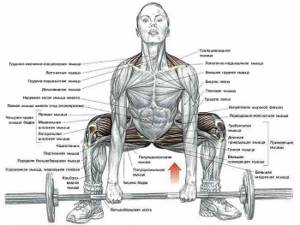
Preparing for the exercise
The key is a specific warm-up, which should be carried out in several stages - with an emphasis on the main working muscles:
Proper execution
Efficiency Tips
Errors
Inclusion in the program
Beginners are advised to practice the sumo deadlift technique using an empty bar. In this case, the recommended operating mode is quite extensive - 8-10 repetitions in 3-4 approaches, which allows you to form the correct dynamic stereotype. To begin with, you can use a reduced amplitude or learn the movement “in phases.”
Moment: When performing a multi-repetition deadlift, only the first repetition is performed from the floor, then the end point of the barbell movement is the middle of the shin.
Contraindications
Purpose of sumo deadlift
You're essentially doing the same movement as a traditional deadlift.
So why might you need to change anything?
It's all about foot placement and how it results in shortening the distance the weight is lifted. By rotating your hips outward, you put more stress on your hamstrings. A narrower stance distributes the weight throughout your hips, glutes, calves, and even quads. In this case, it falls almost entirely on the hamstrings. This makes the sumo deadlift one of the best exercises for this area imaginable (especially when combined with the sumo squat).
You also engage your hamstrings in a completely different way than most lower body exercises. Since you are standing in the same stance as a hamstring exercise, this is obviously how you are engaging the muscles. The sumo deadlift works the biceps and inner thighs. Thus, it allows you to load not only the area immediately under the buttocks, but also along the entire length of the legs.
By strengthening your inner thigh muscles, you will improve your technical performance in all exercises that involve your lower body.
What muscles work in the sumo deadlift?

The traditional deadlift is a classic and one of the best, if not the best, deadlift exercises out there. This is because it works almost every muscle group in the back of the body. Therefore, it should also not be sent to the bench in favor of another exercise. However, you can (and I think you should) add sumo deadlifts to your rowing exercises. Just like a regular one, it uses a large number of muscles in the back of the body.
The target muscle groups in this case are the hamstrings and gluteal muscles. You work this area (especially the tendons) more than with a regular deadlift due to the wide stance.
The abductor muscles are also well worked out. It also works the quadriceps, although this greatly depends on how wide you can spread your legs. And when deadlifting, your forearms also strain, but this is quite obvious, because although the legs do the main work, you still hold the weight with your hands.
As for the secondary muscles, almost the entire back is involved. Thanks to the retraction of the shoulder blades, which you perform at the top of the row, your trapezius receives its portion of the load. Additional stabilizing muscles for this particular deadlift include the hip flexors, abs, and rhomboids.

Advantages and Disadvantages of Sumo Squats
Like all exercises, sumo squats have both positive and negative sides. Check them out and decide whether you should do it. Or maybe not.
Advantages
- Sumo squats help develop the gluteal region. This is especially important for girls. Those who want to have a round butt, but at the same time do not affect the growth of their hips.
- The ability to perform squats for tall athletes.
- Due to the smaller range of motion, you can take a much larger weight of weight. Of course, all this is done gradually to minimize the risk of injury.
- Sumo squats can be performed with a variety of weights. Starting from dumbbells and ending with barbells. Therefore, it can be performed both at home and in the gym.
- This is a strength exercise, so during sumo squats the body experiences extreme stress. What gives impetus to the growth of muscle mass.
- The flexibility of the knee and hip joints also improves.
- When performing sumo squats with weights, the muscles of the back and abdominal cavity are strengthened. This reduces the risk of spinal injury.
- Well, the most important thing is that the entire lower part of our body develops. This will help increase strength in other basic exercises that are performed while standing. For example: ARM BENDING WITH A BAR or OVERHEAD BAR RAISES.
Flaws
- Mastering the sumo technique will take much longer than classic squats. This is especially true for beginner athletes. Therefore, achieving results with sumo squats is a more labor-intensive activity.
- There is a high risk of injuring your lower back. This is mainly a consequence of incorrect technique.
- The load on the quadriceps will be much less than in classic squats. This fact must also be taken into account for men who will take sumo squats as their main ones. But this disadvantage can be easily compensated for by the large weight of the burden. Of course, within reasonable limits.
As you can see, there are also disadvantages. And some of them can turn out to be very serious if they are not taken into account. But if you make every effort and wait a little. Then all these shortcomings will not affect you. And you will only get positive results from sumo squats.
Female version
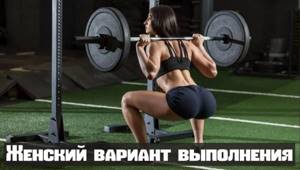
We are talking about sumo squats with an emphasis on the gluteal muscles. Of course, men can also perform them if this area is lagging behind in their development. A variety of equipment is used as weights: dumbbells, weights or barbells. For beginner athletes, it is best to start getting acquainted with the exercise without weight. Then take a light dumbbell or bodybar for 4-6 kg. When working with a barbell, do not forget about safety measures. We perform squats in a power rack with installed limiters. On which we can place the barbell if we cannot stand with the barbell. We take the barbell from the racks, not from the floor. We are in no hurry to increase working weight.
Initial position:

- If you plan to perform sumo squats with a barbell. Then set the bar to the desired height (just below your shoulders).
- Be sure to use restraints, even if you are confident that you can handle the given weight.
- Climb under the barbell and place the bar on your back, near your rear delts.
- We grab the bar with our hands with a wide grip.
- As you exhale, remove the barbell from the racks by straightening your legs.
- Let's take one step back.
- We spread our legs wider than shoulders. We turn our socks 45°. They should face the same direction as your knees.
- Keep your back straight, shoulder blades pulled together.
- The gaze is directed upward and forward.
- To squat with a dumbbell and kettlebell, just take them in two hands and lower them down.
Performance:
- After you have decided on the weight and taken the starting position. We take a breath and begin to bend our legs at the knee joints. At the same time, we move the pelvis as far back as possible. And we lean forward a little. This will give us the opportunity to stretch the gluteal muscles.
- We try to squat as deep as possible, using the full potential of the gluteal muscles.
- We begin returning to the starting position from the pelvis. That is, we move it forward, at the same time we straighten our legs. It is important that all the emphasis goes to the heels; this will prevent us from pushing our knees forward beyond our toes. Therefore, the quadriceps will not take the entire load on itself.
- In the starting position, you should not completely straighten your legs. To avoid overloading the knee joints.
Control your every movement, avoiding inertia and jerking. Start squatting only after you are sure that the barbell is securely resting on your shoulders.
Male version
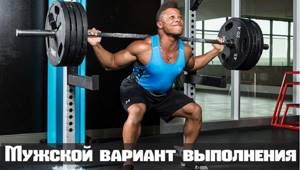
For men, the implementation will be slightly different. Since their buttocks are not a priority muscle group. Basically, everyone strives to develop the front of the thighs. We are talking about the quadriceps femoris muscle, or as many are accustomed to calling it the quadriceps. In order to shift the emphasis to this group, it is necessary to exclude pelvic abduction and forward tilt of the torso. This will prevent the gluteal muscles from working alone. To do this, we will have to sacrifice the amplitude of movement and perform a half squat. That is, we bend our legs until the pelvis is parallel to the floor. At the same time, we try to keep the torso in an upright position, avoiding bending forward.
Initial position:
The starting position will be no different from the previous version.
- That is, we also set the bar to the desired height.
- We crawl under the bar. We stand up with him by straightening our legs.
- We take a step back and spread our legs wide. The back is straight, the gaze is directed forward and upward.
- When working with other weights with dumbbells or kettlebells. We hold the projectile with both hands, lowered down.

Performance:
- While inhaling, we begin to bend our legs at the knee joint.
- As soon as we bend our legs at 90° degrees, exhale and return to the starting position. It is imperative that all the emphasis goes on the heels.
- Repeat the specified number of times.
As you can see, this option is no different from classic squats. Except for the width of the legs and range of motion. But for tall athletes, this is the only opportunity to perform this exercise.
Who should do sumo deadlifts?
This is truly a great deadlift variation that everyone should at least try.
Of course, if you spend time in the gym practicing all the deadlift techniques, you can stay there. Sumo deadlifts can be added to a routine along with regular deadlifts, or done periodically in place of them, changing them every few weeks to continue to surprise the muscles in your lower body (and to keep your workouts from getting boring with monotony).
As for who should do sumo deadlifts instead of regular ones, it all comes down to the traumatic nature of the exercise. The sumo deadlift places much less strain on the lower back and spine.
So if you suffer from back pain or have had an injury to the area, switching to sumo deadlifts will give you the ability to perform the exercise without putting your back at risk.
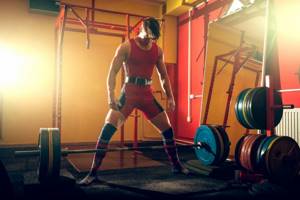
Example workout
As with most powerlifting movements, it all depends on whether you want to work for strength or size.
If this is your first time doing the exercise, be sure to start with a light weight.
Even if you're a seasoned lifter, shifting your focus takes time for your muscles to adapt, so you likely won't be able to lift heavy weights right away.
If your goal is strength, do 3 sets of 4 reps . There are likely many more pulling exercises in your later program, so once you complete this deadlift, stop and move on to the next one. However, if time is pressing or you end the program with sumo deadlifts, add an additional fourth set, but use a lighter weight for it and do 12 reps.
This can help burn off any remaining energy and push your lower body muscles to the point of failure.
If you just want to build muscle and not increase strength, do eight to 12 repetitions.
If you can do 12 reps without difficulty, you need to increase the weight. 9 or 10 reps is your benchmark. Do three sets and increase the weight each time if you did 12 reps before. You need to bring the body to a state of muscle failure. If you've done 12 and can still lift weights, then you're not getting the full benefit out of the exercise.


